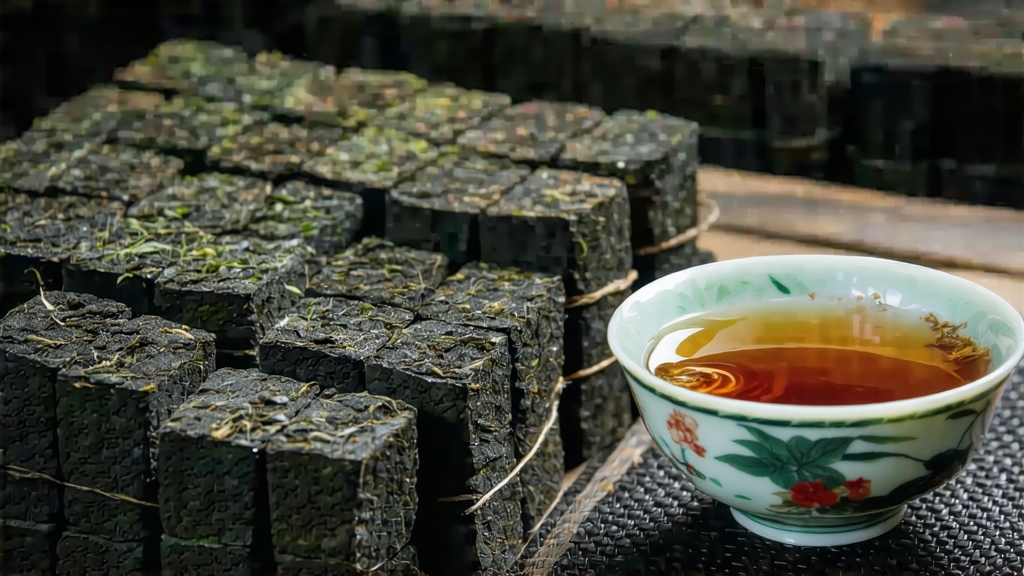
Tucked away in the humid, karst-pocked mountains of southern Guangxi, Liu Bao tea has spent the last four centuries quietly fermenting its way into the hearts of dockworkers, emperors, and now, global tea aficionados. To the uninitiated, Liu Bao is simply another dark brick in the vast mosaic of Chinese post-fermented teas; to those who have tasted its cocoa-betel snap and felt its warming qi slide down the spine, it is a liquid time capsule that carries the terroir of the Wuzhou region and the ingenuity of the tea masters who invented “wet piling” long before the word “microbiome” entered the culinary lexicon.
Historical footprints
The story begins in the early Qing dynasty, when tea from the small township of Liu Bao (literally “Six Forts”) was carried by shoulder pole and river raft to the port of Wuzhou, then loaded onto bamboo-sailed junks bound for Hong Kong, Macau, and the Malay archipelago. Indentured Cantonese and Hakka laborers working the tin mines of Kuala Lumpur discovered that the tea soothed their stomachs after a greasy tin-mine breakfast and, more importantly, resisted mold in the equatorial humidity. By the late nineteenth century, Liu Bao had become a currency of the Chinese diaspora: shopkeepers measured it out in tael weights, and Straits Chinese families stored it in earthen jars beneath their beds, believing that the tea absorbed bad dreams and bad luck. In 1950, when the People’s Republic nationalized tea production, Liu Bao was pressed into 50 kg gunny sacks and shipped to Hong Kong as “coolie tea,” sold for a few cents a cup in dockside canteens. Only in the past two decades has it re-emerged as a collectible, with 1970s “Songpin” cakes fetching four-figure prices at Kuala Lumpur auctions.
Varietal identity
Liu Bao is not a single cultivar but a processing style applied to a pool of local large-leaf Camellia sinensis var. sinensis bushes that have acclimated to the red, iron-rich soils of Guangxi. The most prized micro-origins are the high-elevation villages of Tashan, Xianren, and Heishi, where mist slows photosynthesis and thickens leaf cuticles. Farmers still distinguish between “mountain tea” (shancha) and “garden tea” (yuancha), the former picked from seed-propagated trees of 30–80 years, the latter from terraced bushes pruned to waist height. Mountain tea delivers the resinous, camphor-like top notes that collectors crave, while garden tea provides the sweet, tarry body that anchors a well-aged blend.
Crafting the darkness
The journey from fresh leaf to Liu Bao is a choreography of heat, moisture, and microbial alchemy. Picking begins at dawn in late April, when three leaves and a bud still hold the night’s dew. After a brief outdoor withering to soften cell walls, the leaves are tossed in heated woks at 280 °C for three to four minutes—just long enough to kill green enzymes while preserving leaf integrity. The hot leaves are then rolled for twenty minutes under mechanical pressure, rupturing cells so that polyphenols and polysaccharides can mingle. Sun-drying follows, spreading the leaf on bamboo mats for a single afternoon, curling like dark green commas.
The signature step is “wet piling” (wo dui), invented in Liu Bao during the 1950s and later borrowed by Yunnan producers to create ripe Pu-erh. The dried maocha is sprayed with warm Wuzhou tap water—famous for its high mineral content—until moisture reaches 35–40 %. Workers pile the tea 70 cm deep in concrete bays lined with rice-straw mats, then cover it with jute sacks and wooden boards. Inside this compost-like heap, thermophilic bacteria bloom, pushing internal temperature to 55 °C within 36 hours. Every three days the pile is turned, aerated, and re-moistened; after 25–30 days the leaf has turned chestnut-brown and exudes the scent of damp earth, nutmeg, and dried longan. The tea is finally dried again, steamed, and pressed into 500 g bricks, 250 g baskets, or 50 kg loose sacks for tropical export.
Aging architecture
Unlike green tea that fades with time, Liu Bao enters a second life once it leaves the factory. The ideal cellar